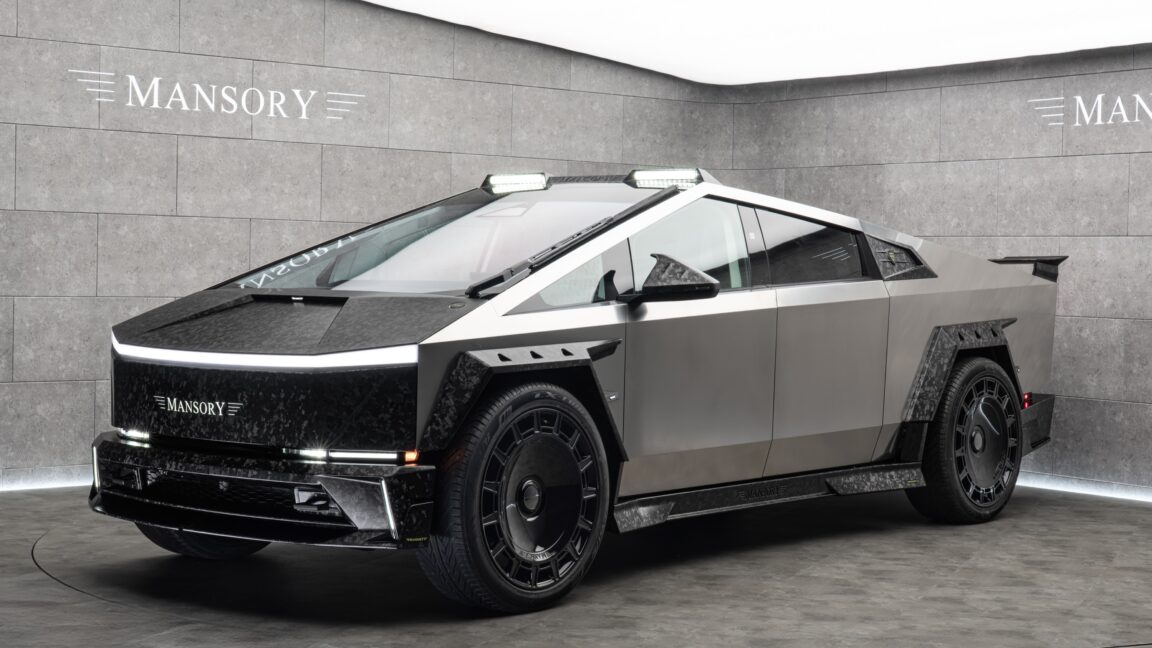
WWW.DIGITALTRENDS.COM
25 years of Oscar Best Picture snubs, by year
ABCTable of ContentsTable of Contents2001: Gosford Park2002: Chicago (the right choice)2003: Lost in Translation2004: Sideways2005: Brokeback Mountain2006: The Departed (the right choice)2007: There Will Be Blood2008: Milk2009: Inglourious Basterds2010: The Social Network2011: Moneyball2012: Lincoln2013: Her2014: The Grand Budapest Hotel2015: Mad Max: Fury Road2016: La La Land2017: Phantom Thread2018: Roma2019: Once Upon a Time in Hollywood2020: Sound of Metal2021: Licorice Pizza2022: The Banshees of Inisherin2023: Maestro2024: AnoraFirst, a confession for the last four years, I havent watched the Oscars telecast. (I learned about the whole Will Smith situation the next morning, if you were wondering, and I cared about it just as much as I would have the previous night, which is to say not at all.) Why have I skipped out on this ostensibly unifying American cultural moment for a whole presidential cycle? Because practically nothing inspires more gall in me than an Academy Awards show.For decades, Academy voters, swayed by craven awards season campaigns and driven to serve their own studios interests above those of posterity and the public, have continually given the wrong awards to the wrong people, rewarding mediocrity and leaving artistry going begging.Recommended VideosNeed proof? Here are the films that should have won the last 24 Academy Awards for Best Picture, out of the available nominees, and the one that should win it this year not that Im holding my breath. And because the nominees are often (read: usually) themselves wrong, Ive included one egregiously un-nominated film from each year.Related2001: Gosford ParkRobert Altmans sophisticated murder mystery, with all the trappings of an Agatha Christie novel but a surprisingly acute class consciousness, is airily, elegantly shot by cinematographer Andrew Dunn and features an erudite script by Julian Fellowes, whose subsequent hit Downtown Abbey lacks Gosford Parks edge. Its miles better than Ron Howards one-dimensional A Beautiful Mind, which won the big prize that year.Egregious snub: The Royal Tenenbaums2002: Chicago (the right choice)This one is a photo finish. Against stiff and worthy competition from Scorseses Gangs of New York and Polanskis The Pianist, Chicago narrowly earns its Best Picture crown with the benefit of hindsight. (Its a better watch than the Polanski film and cleaner than the Scorsese.) The screen adaptations of stage musicals that work the same way and as well as their source material can be counted on one hand, and Rob Marshalls film is one. Jumping into an inky black theatrical void for its musical numbers and returning to an ably production-designed 1920s for its book scenes, Marshall happened on a down-and-dirty, hip style that hes been foolish enough to try to vainly recreate in the four execrable movie musicals hes made since.Egregious snub: Secretary2003: Lost in Translation Scarlett Johansson and Bill Murray give performances so perfectly calibrated that Sofia Coppolas worshipful camerawork can only stand back and admire the view. The decision to award the prize to The Lord of the Rings: The Return of the King that year can only be viewed as a product of its time its impossible to imagine the prestige-conscious Academy honoring a big-budget franchise entry this way today. In any case, I confess I never bought into Peter Jacksons muddy, melodramatic pyrotechnics-over-substance. Give me Coppolas keen attention to human behavior any day.Egregious snub: School of Rock2004: Sideways A weak year gave us Clint Eastwoods dour Million Dollar Baby as the featherweight champ, but Alexander Paynes Sideways wins this one in a TKO. Paynes adaptation of Rex Picketts novel about a bachelor weekend in wine country cyclically repeats gorgeously poetic images in a way that even a strong piece of written fiction cant do, which is part of the reason to adapt existing material in the first place. Paul Giamatti, as an aspiring novelist with particular feelings about merlot, is so superb you can feel yourself osmosing his high blood pressure through the screen.Egregious snub: Eternal Sunshine of the Spotless Mind2005: Brokeback Mountain Was there even a need to include this entry? Paul Haggiss anthology drama Crash (much better than its cracked up to be but still pretty preachy) incited a firestorm when it defeated Ang Lees tender gay romance Brokeback Mountain. 20 years later, most Hollywood wags still consider this year one of the two prototypical examples of Oscar wrong-headedness (more of the other one later), and its hard to argue.Egregious snub: The Squid and the Whale2006: The Departed (the right choice) The last time to date Best Picture got it right, and a tremendously satisfying instance of Hollywood karma paying off. Martin Scorseses razor-sharp remake of the Hong Kong film Infernal Affairs was the first and as yet only time a Scorsese film has won Best Picture. (Marty picked up his first and so far only Best Director award that year, too.)Egregious snub: Casino Royale2007: There Will Be Blood Ill give it to the Academy this one was nearly impossible. As between the Coen Brothers masterpiece No Country for Old Men, which took home the prize, and Paul Thomas Andersons brutal derricking of the American psyche, There Will Be Blood, its basically a coin flip. (And that leaves out the equally fantastic if more popcorn-y Michael Clayton, also nominated. Why dont we get movie years like this anymore?) But for me, Andersons film, audaciously and tightly controlled and featuring in Daniel Day-Lewiss Daniel Plainview one of the best performances ever committed to celluloid, is (marginally) the better of the two.Egregious snub: The Darjeeling Limited2008: MilkGroundswell ProductionsA weak year, won by Danny BoylesSlumdog Millionaire I find his attention-disorder editing style off-putting as a rule. Gus van Sants stark telling of the shocking real-life story of politician and gay icon Harvey Milk was more moving and all the more relevant in a year when California banned same-sex marriage. What happened to Milk was outrageous, and the film enlists its audience in that righteous anger.Egregious snub: In Bruges2009: Inglourious BasterdsThe Weinstein Company2009 was the year of the Academys biggest mistake in the modern era the expansion from five nominees for Best Picture to ten, a desperate attempt to respond to popular backlash to The Dark Knight being snubbed in 2008. The result was a splintered series of partisan voting blocs (roughly aligning with the various Hollywood guilds) whose beneficence was increasingly random, beginning with 2009s victory for the self-aggrandizingly gritty war drama The Hurt Locker over the years frontrunner, the pedestrian Avatar. But it was Quentin Tarantinos genre-smashing World War II revenge fantasy, Inglourious Basterds, with its script like a great novel and its star-making performance by Christoph Waltz, that deserved the prize.Egregious snub: Fantastic Mr. Fox2010: The Social NetworkIn competitive Oscar years, its a good bet to put your money on the British period drama. (See Chariots of Fire, Oliver!, A Man for All Seasons, My Fair Lady, Tom Jones, Lawrence of Arabia I could go on.) Sure enough, the able and engaging but awkwardly directed The Kings Speech managed a neck-and-neck triumph over The Social Network, an unprecedented collaboration between auteurs Aaron Sorkin and David Fincher and one of the best films of the 21st century. Go figure.Egregious snub: Beginners2011: MoneyballColumbia PicturesNow we get into a highly competitive stretch. In a wildly illustrious year of extravagantly accomplished films like The Descendants, Hugo, and Midnight in Paris, Moneyball was quiet, handled with care, class, and attention to detail by director Bennett Miller (who has made three narrative features and been nominated for Best Director twice). The Artist, which won that year, was nice enough but rode the coattails of its awards-season narrative as the first silent film to win Best Picture since 1927.Egregious snub: The Girl with the Dragon Tattoo2012: Lincoln Django Unchained would be just as deserving a winner here, but Lincoln is the kind of towering historical drama that only Spielberg can make (its closest parallel is his Amistad, also in part about an American President). It also helps that it features the aforementioned Day-Lewis in his final Oscar-winning role (he won three and should have at least six). Argo won that year as a sop to Ben Affleck, who was seen as having been snubbed for Best Director.Egregious snub: Moonrise Kingdom2013: HerSteve McQueen is a rigorous filmmaker whose work runs the gamut from the earth-shatteringly brilliant (2011s Shame) to the insipid (2024s Blitz). His 12 Years a Slave, which won in 2013, is, like all movies that are honest about slavery, a real trial to watch, so brutal, in fact, that its quality becomes sort of a secondary concern. Personally, I preferred Spike Jonzes exquisitely personal Her, a delicate allegory about artificial intelligence that is in fact a way of dealing with his divorce from Sofia Coppola, a period she herself mined for Lost in Translation.Egregious snub: Drinking Buddies2014: The Grand Budapest Hotel As my egregious snubs from 2001, 2007, 2009 and 2012 might suggest, Im personally of the opinion that Wes Anderson is one of the greatest working directors, even if he has been on a self-indulgent downward spiral since he made The Grand Budapest Hotel, his first and so far only film to be nominated for Best Picture. With all the idiosyncrasies of his smaller character dramas but the scale of a historical epic, Budapest is thoroughgoing joy. The same cant be said for Birdman, this years winner, which is technically accomplished and entertaining in its way but small-minded and coarse in its kneejerk cruelty to its characters.Less-than-usually-egregious snub: Nightcrawler2015: Mad Max: Fury RoadVillage Roadshow PicturesHow far weve come and/or fallen. In 2003, The Lord of the Rings: The Return of the King carried its sweep of the technical awards forward into the nights big prize. In 2015, another (but self-evidently superior) franchise entry, Mad Max: Fury Road, won six Oscars but fell short of Best Picture, losing to the eminently worthy but far from life-changing Spotlight. In the decade since, George Millers adrenaline-shot-as-cinematic-experience has come to be understood as one of the best of the century. But then the Academy never had any ability to predict staying power. Everyone and their mother thinks Vertigo is the best or second-best movie ever made. It got a grand total of two nominations Art Direction and Sound.Egregious snub: Carol2016: La La LandPlease, please, please, no angry letters: I loved La La Land. I still love La La Land. Sue me.Egregious snub: 20th Century Women2017: Phantom ThreadDunkirk, Get Out or Three Billboards? I wouldve been quite pleased. Lady Bird or Call Me by Your Name? I would have understood. But The Shape of Water? Guillermo del Toros tortured monster movies have always been more interesting curiosities than real achievements to me. As compared to Paul Thomas Andersons masterful Phantom Thread, a twisted romance which created a fresh paradigm for on-screen lovers, Shape of Water is a cold fish. But that outrage doesnt compare to giving the Oscar to Gary Oldman in the abominable Darkest Hour for wearing makeup, when they could have given it to Day-Lewis for his surpassing performance in this, his final film before his retirement.Egregious snub: The Death of Stalin2018: Roma The irrelevance of the Academy for the under-30 generation is generally understood to begin with the awarding of the 2018 Best Picture award to Green Book, a film one could easily imagine airing on TNT on a Sunday afternoon in 2004, but less so going home with three Oscars. There are all sorts of reasons why Green Book won, but the primary one is that the most deserving film of 2018 and Green Books primary competition was released by Netflix. In 2018, the streamers takeover of Hollywood was still widely resented, so much the worse for Alfonso Cuarns lyrical and gorgeous autobiographical story of 1970s Mexico City.Egregious snub: First Reformed2019: Once Upon a Time in HollywoodColumbia PicturesBong Joon-hos Parasite is sophisticated and deserving, but it didnt have the joy, the catharsis, or the crackling dialogue of Quentin Tarantinos latest. Its harder to appreciate now what a Fourth-of-July sparkler of pleasant surprise was the films conclusion when it was first released. A shaggy-dog hangout movie, when done right, can outclass the most tightly plotted thriller.Egregious snub: Portrait of a Lady on Fire2020: Sound of MetalCaviarThere is very little in the array of nominees for the Oscar in 2020 about which to be genuinely passionate. Im willing to accept that the pandemic was partially to blame, but I can think of at least four 2020 films off the top of my head more deserving than the eight nominated (see one of them below).Theres some truly bottom-of-the-barrel stuff here, like Finchers self-indulgent Mank and Emerald Fennells spectacularly overrated Promising Young Woman, and some that youre guaranteed to watch once and never think of again, like the eventual winner, Nomadland. Of the options available, Darius Marders intense and ultimately heartrending Sound of Metal takes the cake if only for the killer central performance of Riz Ahmed, who had the rare distinction of out-acting Anthony Hopkins in The Father, though of course the latter won Best Actor.Egregious snub: Kajillionaire2021: Licorice Pizza Perhaps youve gotten the sense (see 2007 and 2017) that Wes is not the only Hollywood Anderson I revere. Paul Thomas Andersons Licorice Pizza, an atmospheric period piece roughly based on the childhood of producer Gary Goetzman, is a superb, overwhelming, extraordinarily romantic movie by a cinematic genius working at the top of his game. CODA, this years winner, is fine.Egregious snub: The Worst Person in the World2022: The Banshees of InisherinClose call here between this and Spielbergs The Fabelmans, a totally unexpected journey out of his wheelhouse. But Banshees, aside from being one of the more perceptive films about male friendship, is a triumph of tone, while the winner, Everything Everywhere All at Once, is just what its title implies often to its detriment. I liked it okay, but to me it felt like a marvelously well-put-together student film. I much preferred Daniel Kwan and Daniel Scheinerts previous film Swiss Army Man, which knocked me out when I saw it at Sundance in 2016.Less-than-usually-egregious snub: The Good Nurse2023: MaestroLea PicturesI have an instinctive suspicion of anyone who dismisses movies they see as Oscar bait. What does that mean, exactly message films, or films that offer meaty opportunities for big-swing actors? Sign me up for both. In any case, what is Oppenheimer, this years winner, but Oscar bait? The difference between Oppenheimer and a movie like Maestro, which Im willing to concede wont be everyones cup of tea, is that Maestro applies an artful lens of romanticism to its story appropriate for its central character content dictating form while Oppenheimer is choked nearly to death by the oppressive and inescapable presence of Christopher Nolan. He seems like a nice guy, but I dont particularly want him breathing down my neck for three hours.Egregious snub: Sanctuary2024: AnoraFilmNationAnora is the most likeable and dynamic Oscar frontrunner in years, and its win of the Producers Guild of America award for Best Picture, predictor of the Oscar in six of the last seven cycles, bodes well. To see Sean Baker, who was making films on $3000 budgets while many of his competitors in this category were commanding studio war chests, holding this award might reduce the agita Im otherwise sure to get from this years Academy Awards. Mind you, I said might.Egregious snub: Between the TemplesEditors Recommendations
0 Commentarii
0 Distribuiri
0 previzualizare











